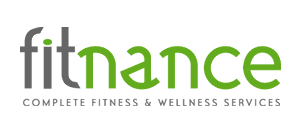 2XU Run Group Time Trial. (4.58km) Musgrave Park Time Trial Course. (Cross Country) 5.45am Thursday 21/10/10NAME: 2 LAP, 4 LAP, 6 LAP, 8 LAP
2XU Run Group Time Trial. (4.58km) Musgrave Park Time Trial Course. (Cross Country) 5.45am Thursday 21/10/10NAME: 2 LAP, 4 LAP, 6 LAP, 8 LAP Chris: 4.10, 8.28, 12.47, 17.08
Damien: 4.28, 9.09, 13.30 , 17.55
Marissa: 4.41, 9.13, 13.35, 18.05
Michael: 4.29, 9.08, 13.49, 18.30
Lou: 4.42, 9.20, 14.12, 18.59
Steve: 4.41, 9.25, 14.28, 19.31
Luke: 5.01, 10.05, 15.25, 20.40
Anna: 5.30, 10.59, 16.10, 21.13
Tanya: 4.40, 10.52, 16.20, 21.30
Lauren: 5.30, 10.59, 16.30, 21.41
Sarah: 5.30, 11.03, 16.33, 21.55
Elaine: 5.30, 10.59, 16.44, 22.04
Adri-Anne: 5.35, 10.59, 16.47, 22.12
Michelle: 5.30, 11.04, 16.47 ,22.17
Katerina: 5.25, 10.59, 17.09, 22.53
Ellie: 5.30, 11.26, 17.40, 20.51 (7 laps)
Lisa: 4.43, 11.03, 17.27, 23.24
Tiff: 5.57, 10.55, 18, 23.38
Kristy: 5.42, 11.41, 17.50, 23.55
Mel, 5.42, 11.55, 18.22, 24.23
Michelle: 5.57, 11.55, 18.28, 24.32
Drew: 5.51, 12.13, 18.15, 25.10
Tammy: 6.41, one on/off
How did you go with negative splitting the session?
Let me know if there are any problems with times as some of my recording was lacking.
Compare your times with the last time trial:
http://fitnance.blogspot.com/2010/06/2xu-run-group-time-trial-8-laps-170610.html#comments

























